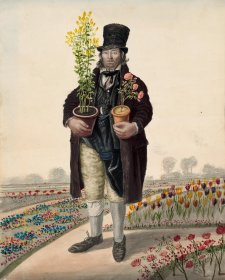Temporary road closures will be in place around the Gallery from 26 February during the Enlighten Festival.
Where did the Africans ‘Black Charley’ and ‘Cotton’ come from, and how did they come to be in Norwich?
There is one interesting possibility. In 1811, a Norfolk gentleman, Capt. (later Rear-Admiral) Frederick Paul Irby took command of the antislavery squadron on the so-called West Africa Station. HMS Amelia patrolled the Atlantic coast for over a year before being forced home after a famous, bloody but inconclusive action against the French frigate Aréthuse. Irby managed some liberations, however, even bringing a number of African boys home with him after the Aréthuse encounter ‘for education’. On 30 May, at St Peter Mancroft Church, ‘immediately after Divine Service (and) in the presence of a very numerous congregation’, Rev. C.J. Chapman baptised these three youths, described as ‘born of African parents names unknown’; their new, Anglo-Creole names are recorded in the baptismal register as Paulo Loando, Edward McKenzie and Charles Fortunatus Freeman.
The 20-something shoemaker of Dempsey’s portrait could well be this last 10 years on, and the rather less fortunate ‘Cotton’ one of his fellows. This is, of course, mere guesswork; after their baptism, the three Africans disappear from the written record. But, whether Irby’s boys or not, Charley and ‘Cotton’ were nevertheless important moral markers in 1820s Norwich. In April 1823, the year of these portraits, an antislavery meeting was held in the town at which a petition was drafted and, by the end of 1825, the Norwich Anti-Slavery Society had been established.
Collection: Tasmanian Museum and Art Gallery, presented by C. Docker, 1956



Dempsey’s people: a folio of British street portraits 1824–1844 is the first exhibition to showcase the compelling watercolour images of English street people made by the itinerant English painter John Dempsey throughout the first half of the nineteenth century.



Visit us, learn with us, support us or work with us! Here’s a range of information about planning your visit, our history and more!



We depend on your support to keep creating our programs, exhibitions, publications and building the amazing portrait collection!